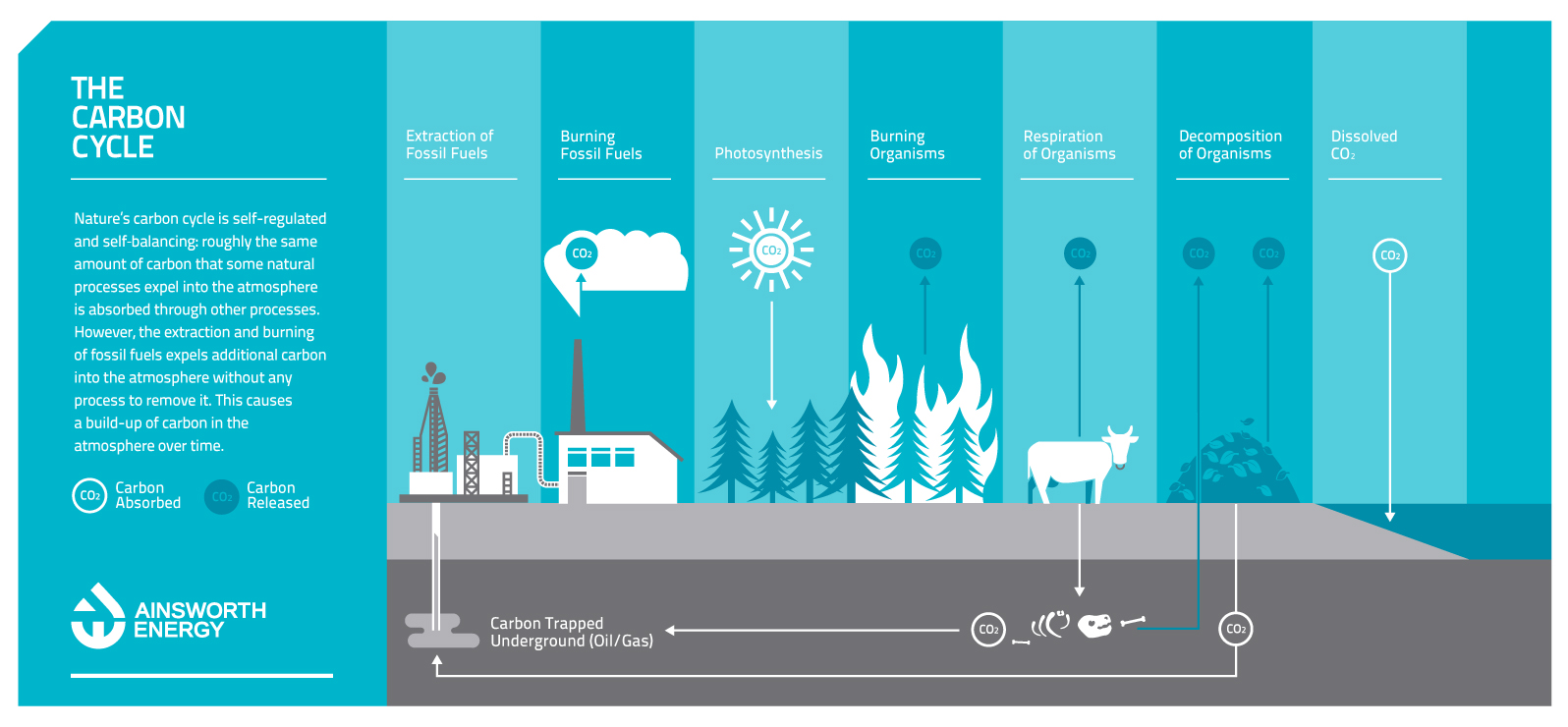The natural carbon cycle is the exchange or recycling of carbon between the Earth’s oceans, atmosphere, ecosystem, and geosphere. Carbon is present in the atmosphere primarily as carbon dioxide.

(Click on illustration to enlarge)
Burning fossil fuels has disturbed nature’s carbon balance. As they are combusted, their carbon that is otherwise trapped underground is released into the atmosphere and at a faster rate than it can be absorbed through natural processes. As a result, there is a gradual build-up of carbon in the form of carbon dioxide. Billions of dollars are currently being invested to explore methods of capturing and sequestering this carbon dioxide from out of the atmosphere; however, to do this requires more energy.
We believe an effective strategy to reduce this carbon build-up is to replace some of the petroleum-based fuels with renewable fuels. Renewable fuels maximize the carbon from waste products, which decompose and release the carbon into the air as part of the natural cycle, and use it to produce energy so that the carbon in fossil fuels can remain untouched.
